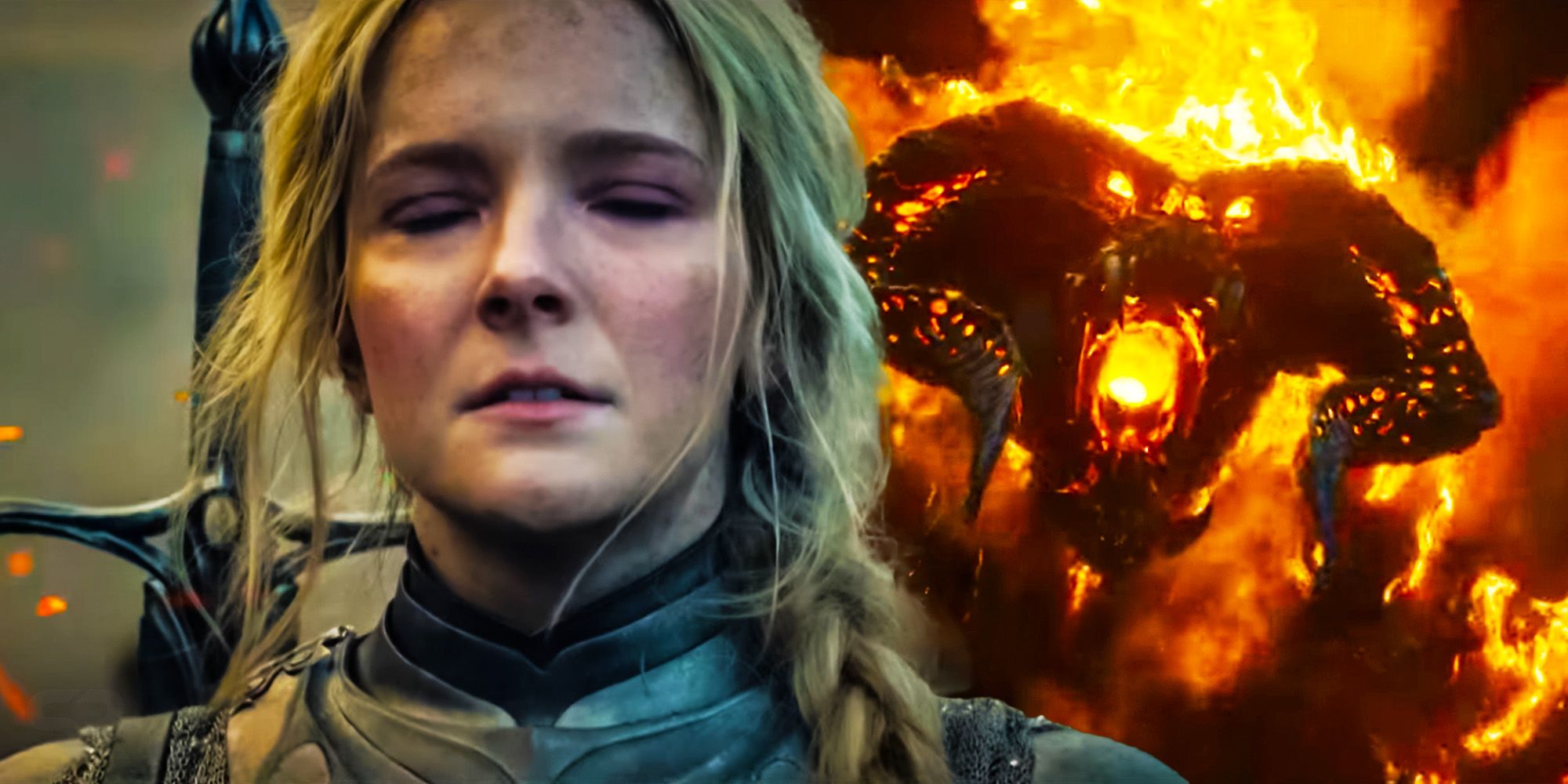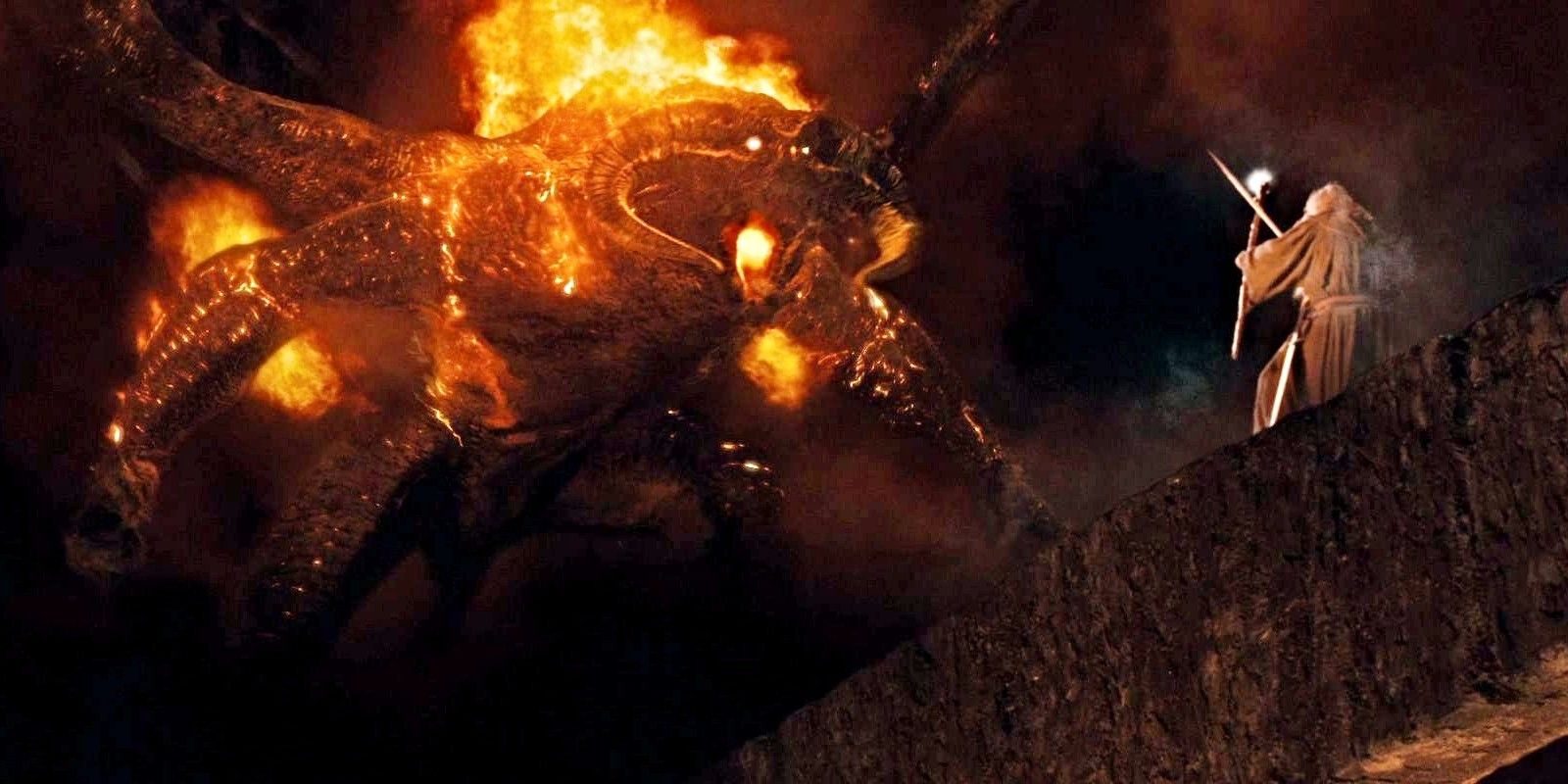The Rings of Power wades into the Lord of the Rings Balrog wing debate - but where did it come from? J.R.R. Tolkien created many famous Middle-earth beasts, from hairy-footed Hobbits to giant fire-breathing dragons. One of the author's most memorable monsters is undoubtedly the Balrog from The Fellowship of the Ring, which chases Frodo's company through Khazad-dûm before Gandalf holds off the whip-cracking beast in a fierce battle to the death. Memorable though the Balrog may be, Durin's Bane is the only one of its kind to appear on Frodo's journey.
Amazon's The Rings of Power SDCC 2022 trailer ends on the stunning reveal of a brand new Balrog - instantly recognizable by its fiery, horned head. The Rings of Power's Balrog design is intentionally similar to Peter Jackson's The Fellowship of the Ring version... but with a crucial difference. For the 2001 live-action movie, Jackson and his team gave Khazad-dûm's Balrog a set of wings, but without the ability to fly (otherwise it would've used them against Gandalf, of course). This sparked debate among Lord of the Rings readers as to whether a Balrog should have wings according to Tolkien mythology. The infamous argument stems from ambiguity over whether in-text references to "wings" are literal or figurative.
Jackson's Lord of the Rings trilogy went literal, purely to make the Balrog more fearsome onscreen. Judging from the shot in The Rings of Power's SDCC trailer, Amazon's new design has opted for wingless Balrogs, with no visible flappers behind the creature's back. Plumes of smoke do, however, cloud the Balrog to form the vague shape of two wings, which matches the metaphorical interpretation of Tolkien's "shadow about it reached out like two vast wings" line. Given how heavily The Rings of Power draws from the aesthetics and feel of Peter Jackson's movies, it's strange indeed that the TV series has backtracked on the winged Balrog issue and decided Tolkien was being poetic after all.
Why There's A Balrog In LOTR: The Rings Of Power
Balrogs are infamously rare during The Lord of the Rings, so why does one appear in The Rings of Power? Balrogs were originally Maiar - the same primordial beings as Gandalf, Saruman and Sauron. They turned against their maker and became followers of Morgoth (then known as Melkor), echoing the biblical transition from angel to demon. Morgoth led the Balrogs (including their lord, Gothmog) into Middle-earth during his early invasion, and they remained under his influence until the very end of Lord of the Rings' First Age when Morgoth was cast into the Void. Most Balrogs died during the War of Wrath between Morgoth and the elves, but a few survivors retreated to the darkest, deepest corners of Middle-earth where they remained largely dormant... unless disturbed by greedy digging dwarves or pesky Fellowships.
According to the history of Khazad-dûm in Tolkien mythology, Durin's Bane (the Balrog that fought Gandalf) didn't awaken until Lord of the Rings' Third Age, meaning The Rings of Power's creature could be a different version who hid elsewhere in Middle-earth. None of these are recorded in print, but are assumed to have existed regardless.
Alternatively, the Balrog from The Rings of Power's SDCC trailer could appear as part of a flashback. Amazon's TV series will include material from Tolkien's First Age, encompassing the early days of Valinor and Morgoth's betrayal of the Valar. The Rings of Power's Balrog may be one of those who fought in Morgoth's army, waging war against the elves during the First Age. If so, Lord of the Rings viewers will see Balrogs in a whole new light - weapons for battle rather than wild demonic animals lurking in darkness.
Join Amazon Prime - Watch Thousands of Movies & TV Shows Anytime


